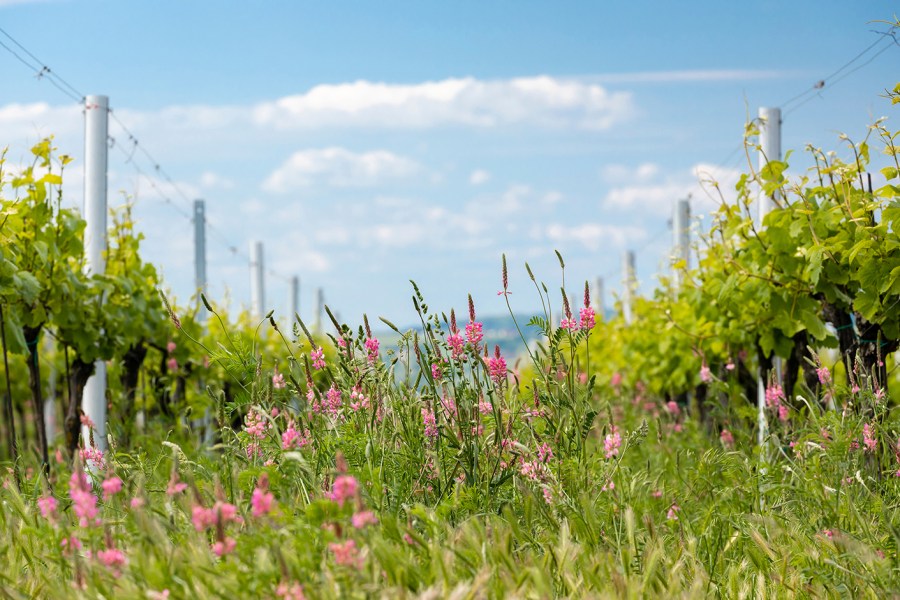As the vine planting season approaches, Hutchinsons Rob Saunders and Chris Cooper offer some advice to those growing vines for the first time.
The past five years have seen a 70% increase in the UK vineyard area, with some 1.4m vines planted in 2021, according to Wine GB.
Careful site selection, choosing clones and rootstocks suited to the location, microclimate (including growing degree days), soil type and target market are fundamental decisions that drive success. While such choices have already been made, there are several other important areas to focus on.
1. Soil preparation
Vines are generally very resilient and should establish well providing soil is in good condition and sufficient moisture has been retained, however, compaction, poor drainage and low pH can make plants struggle, so underlying issues must be rectified before planting.
If not done already, soil testing before primary cultivations (i.e. ploughing) is worthwhile to identify potential structural or nutritional issues.
Roots are quite long, so vines need a good depth of reasonable tilth to go into. A good crumb structure also helps in readiness for sowing grass mixtures in alleyways. Most vine planting is done by contractors with specialist machines, so check their requirements for seedbed preparation.
2. Weed control
In most situations, the ground is sprayed off with glyphosate before ploughing, however a further weed flush is likely as temperatures rise, so consider a follow-up treatment in early April if necessary.
Grow tubes around vines allow herbicides to be applied safely post-planting and protect vines from rabbit damage. Make sure a functioning herbicide sprayer is ready, as weeds can take hold quickly in warm soils and compete with new vines for light, water and nutrients.
Biodegradable membranes laid down straight after planting offer effective non-chemical weed suppression, although some occasional hand roguing (e.g. thistles) may be needed.
Membranes help conserve moisture and warm soil too. Indeed, vines may acclimatise better than those in grow tubes, which can create large temperature swings that sometimes damage young plants inside – frost and heat damage can be greater inside grow tubes. If grow tubes are not used, rabbits must be kept out in other ways.
3. Nutrition
Whether land has previously grown fruit, arable crops or grassland, it is worth testing soil to understand nutrient status.
Phosphate, potassium and magnesium are central to root development, canopy production and strong establishment, and the popular SO4 rootstock is particularly susceptible to Mg deficiency. Generally, maintain P & K Indices around 3, although fertiliser recommendations should be based on soil testing and RB209 guidance.
Depending on fertiliser timing and quantities required, products like potassium sulphate may be preferred over potassium chloride, but speak to your Hutchinsons agronomist for advice.
Any trace element deficiencies (e.g. boron), are best addressed with foliar applications later in the season, rather than soil amendments.
4. Planting
New vine plants are kept in coldstore until planting, which usually occurs from mid-April to mid-May. Ensure roots are kept damp to avoid them drying out before planting.
Once planted, canes and tubes should be installed promptly to protect and support plants. If using a weed membrane, it may be necessary to manually cut the material to ensure vines poke through.
Mechanised planting is accurate and fast, so keep track of what is going where, either with labels on end posts, identifying the clone, rootstock and date planted, or using electronic mapping (e.g. What3Words).
5. Alleyways
Sowing alleyways can be done in spring when vines are planted, or the following autumn. Select a low vigour grass mix, along with broadleaves like vetch and trefoil – advice is available in the Hutchinsons seed catalogue (www.hlhltd.co.uk/products/seed/). Avoid those containing white clover intended for grazed pastures as this can come to dominate the sward.
Spring sowing does run the risk of prolonged dry spells impairing establishment, and of swards being damaged by crews installing trelliswork, but root systems can be quite resilient, so it should protect the soil and reduce the chances of weeds taking hold between rows.
Autumn sowing gives time for grass to establish without being travelled on, but if alleyways are left bare over summer, keep a check on weeds to avoid problems developing.




